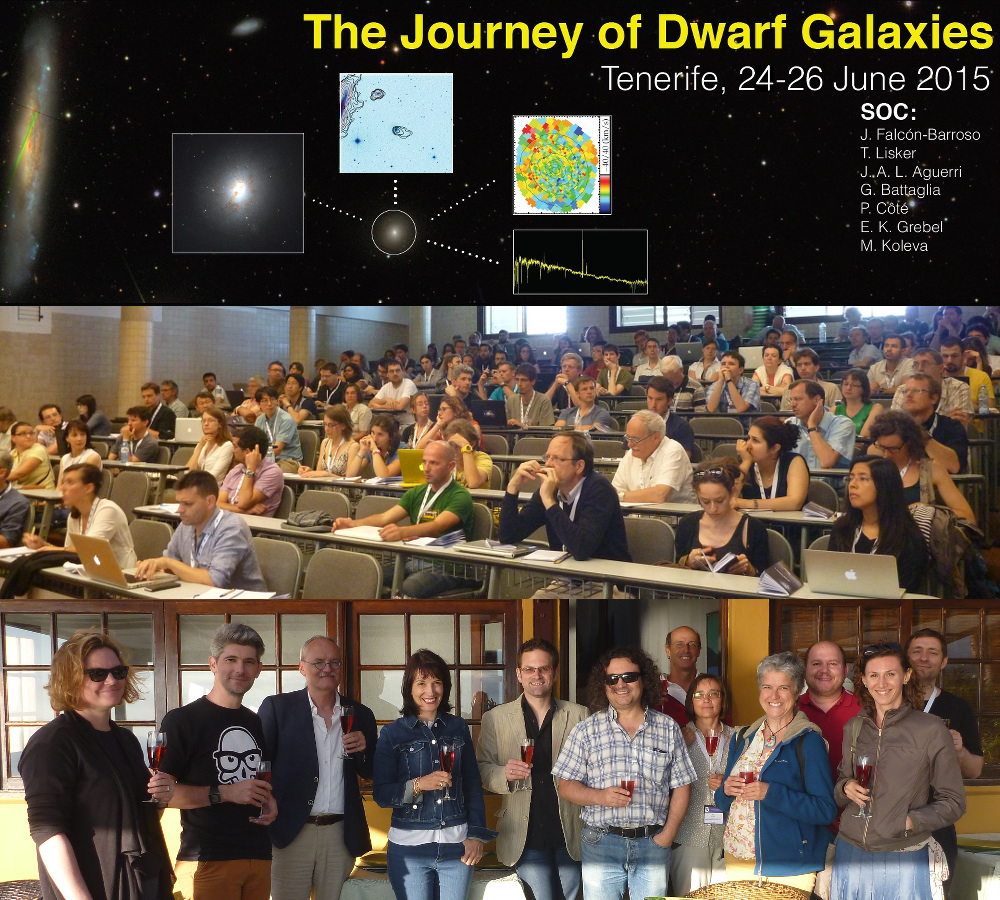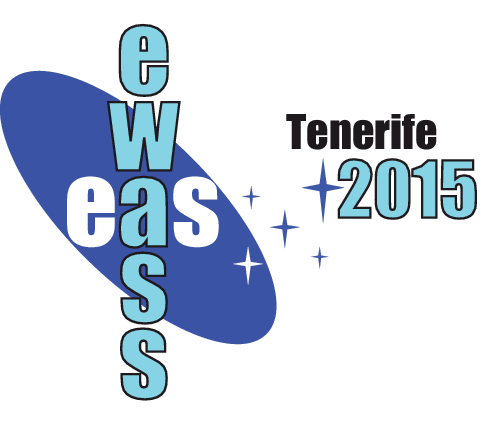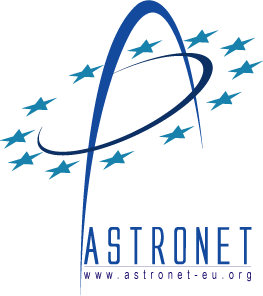|
Symposium S2
24 – 26 June 2015

News:
Thanks to everyone who contributed to a lively and interesting symposium!
Aims and scope
What created the famous morphology-density relation of galaxies? Elliptical galaxies at both high and low mass are most abundant in dense environments like galaxy clusters. Massive ellipticals are believed to be the end products of spiral galaxy mergers - but which mechanisms formed the ubiquitous dwarf ellipticals? Environmental transformation of low-mass disks due to tides and ram pressure is the most popular explanation of their origin, but is too often used as a qualitative interpretation only. The questions we ask in this symposium are: Can simulations and models correctly predict the diverse physical characteristics we observe for dwarf galaxies? Can, in turn, present-day dwarf galaxy properties be used as a fossil record of the assembly history of an environment?
We aim to bring together theorists and observers to present their research and join the discussion on the following topics:
- Which transformation processes work and which don't? Which are necessary to explain what we observe, which aren't?
- What do dwarf galaxies look like that have not been strongly affected by the environment, and do we find them where we expect them to be?
- How does cosmic evolution change the conditions under which dwarf galaxies form and the mechanisms that act on them? Would this be sufficient to explain the diversity of dwarfs in the local universe?
- Which dwarf galaxy properties can be used as indicators for environmental assembly, like the accretion of galaxy groups onto a cluster halo? Which observations and simulations would be necessary to decipher the assembly history of an environment from its dwarfs?
One of our primary goals is to avoid 'jpeg science' and unclear physical properties of galaxies. Instead, our emphasis is on the actual parameter space of low-mass galaxies and the mechanisms shoving them around therein. This focus will put theorists and observers on a common basis, using a language that both can understand.
Programme
The symposium consists of 8 invited talks, 25 contributed talks, a discussion session, and over 30 posters.

Invited speakers
- Bruno Binggeli (University of Basel, CH)
- Alessandro Boselli (Laboratoire d'Astrophysique de Marseille, FR)
- Sven De Rijcke (Ghent University, BEL)
- Laura Ferrarese (National Research Council of Canada & University of Victoria, CAN)
- Carme Gallart (Instituto de Astrofísica de Canarias, La Laguna, Tenerife, ESP)
- Ewa L. Łokas (Nicolaus Copernicus Astronomical Center, Warsaw, PL)
- Rory Smith (Laboratoire AIM Paris-Saclay, FR & Yonsei University, Seoul, KR)
- Eline Tolstoy (Kapteyn Astronomical Institute, University of Groningen, NL)
Scientific organisers
- Jesús Falcón-Barroso (co-chair) (Instituto de Astrofísica de Canarias, La Laguna, Tenerife, ESP)
- Thorsten Lisker (co-chair) (Zentrum für Astronomie der Universität Heidelberg, DE)
- José Alfonso López Aguerri (Instituto de Astrofísica de Canarias, La Laguna, Tenerife, ESP)
- Giuseppina Battaglia (Instituto de Astrofísica de Canarias, La Laguna, Tenerife, ESP)
- Patrick Côté (National Research Council of Canada & University of Victoria, CAN)
- Eva K. Grebel (Zentrum für Astronomie der Universität Heidelberg, DE)
- Mina Koleva (Ghent University, BEL)
Contact
Jesús Falcón-Barroso: jfalcon @ iac.es
Thorsten Lisker: tlisker @ ari.uni-heidelberg.de
Updated on Fri Jul 10 21:58:07 CEST 2015
|

 A power cut will shut down all EAS services on Tuesday, 10 January 2017 starting at 7:30 CET.
A power cut will shut down all EAS services on Tuesday, 10 January 2017 starting at 7:30 CET.



















